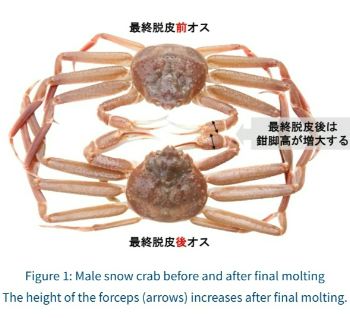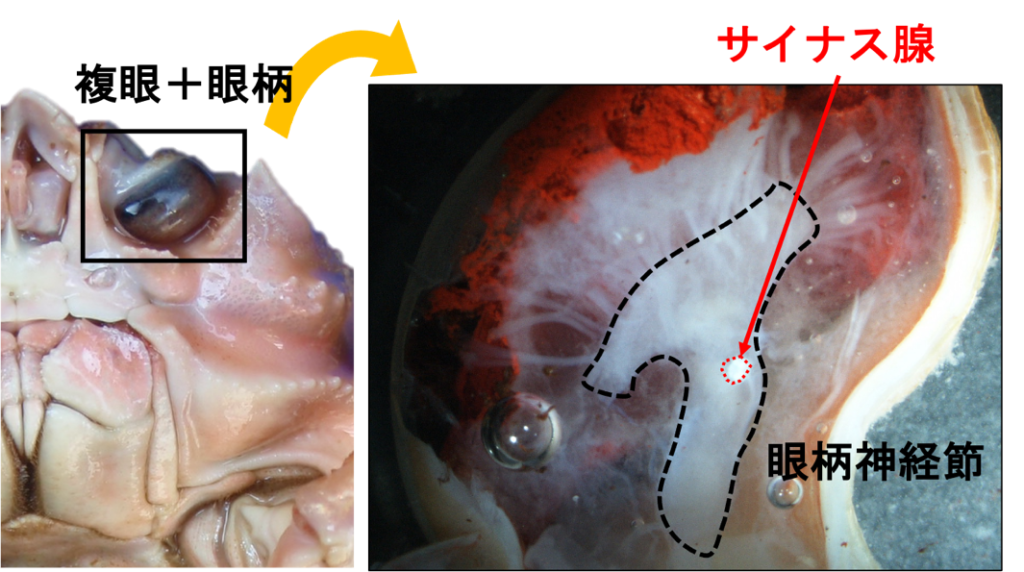|

Male snow crab before and after final molting The height of the forceps (arrows) increases after final molting
SCIENCE: Elucidation of the behavioral mechanism of snow crabs, Kanazawa University and the JFREA
 JAPAN
JAPAN
Friday, May 26, 2023, 07:00 (GMT + 9)
A joint research group including Kanazawa University and the Japan Fisheries Research and Education Agency announced that they have clarified the mechanism of behavioral changes observed in male snow crabs before and after the final molting. Elucidating the ecology of snow crab may contribute to the development of efficient aquaculture technology.
The research group focused on methyl farnesenate (MF), a hormone molecule, and compared blood MF concentrations in male snow crabs before and after final molting. As a result, it was found that the MF concentration increased after the final molting due to the suppression of the expression of the MF-degrading enzyme gene and the like
 concentration in males before and after final molting MF concentration is higher after final molting (right) than before final molting_.jpg)
Comparison of blood methyl farnesenate (MF) concentration in males before and after final molting MF concentration is higher after final molting (right) than before final molting.
Furthermore, in insects closely related to crustaceans, signaling pathways of biogenic amines such as octopamine and dopamine, which cause changes in behavior, were activated in the body of males after final molting, suggesting that biogenic amines It was suggested that this may be the cause of the aggressive behavior of the males.
Understanding the breeding ecology is not only important knowledge for resource management, but also contributes to the establishment of efficient production methods for post-molting males, which are of high fishery value, by artificially controlling the final molt. It may also be useful in developing efficient aquaculture technology.

Eye stalk and eye stalk ganglion
The compound eyes are shown when viewed from the ventral side of the snow crab (left). Anatomy of the excised compound eye and eye stalk (right).
The black dotted line is the orbital ganglion, and the red dotted line is the sinus gland.
In the future, the research group will proceed with a comparative analysis of a small species that belongs to the spider crab superfamily, which is the same as the snow crab, and is easy to keep, and will feed back the results obtained from this to research on the snow crab.
Crustaceans, such as shrimp and crabs, grow in size and reproduce by repeatedly moulting throughout their lives. It was known that male snow crabs molt from juvenile crabs 10 to 12 times, and after the final molt, their claw legs become enlarged and their behavior becomes aggressive, but the mechanism has not been elucidated.
Source: kanazawa-u.ac
editorial@seafood.media
www.seafood.media
|



